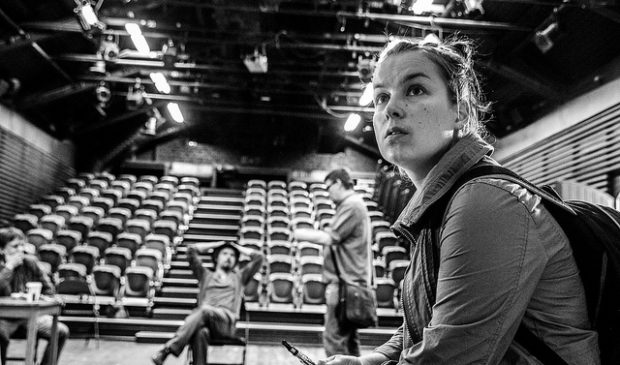Arts Commission seeks $25M bond increase to fund ‘adaptive’ creative space
Thursday, March 29, 2018 by
Chad Swiatecki The Arts Commission has asked City Council to add $25 million to this fall’s infrastructure bond package. The money would be used to provide more rehearsal and performance space for arts groups that are quickly running out of usable space as the city’s property values continue to rise.
At its meeting on Monday, the commission voted to support the recommendation of the city’s Bond Election Advisory Task Force to allocate $67.5 million from the $851 million package toward improvements and expansions at five cultural centers.
An amendment to that item asks Council to add $25 million to the bond package “for property purchase/adaptive reuse for creative space” to address the space crunch that has hit groups such as Rude Mechs and the Pump Project Art Complex as their landlords either dramatically increased rents or pursued the sale and redevelopment of their spaces.
The recommendation includes a rationale section that explains Austin is at risk of displacing a critical mass of artists and musicians who have historically made up the city’s identity and cultural fabric: “In light of the current crisis, and the value of the creative sector that is recognized by our City Council, it is critical that we not only address the current infrastructure needs for our Cultural Centers, but also prioritize bringing additional creative spaces online.”
Council will make the final decision on the amount and composition of the bond package later this spring, with a public vote in the fall election.
The commission’s request could put back into play a preliminary study created by the Cultural Arts Division at the beginning of the bond evaluation process, with the intent of creating more space for local creatives. That study proposed spending $10 million to $15 million to pursue an adaptive reuse of a building with approximately 50,000 square feet that would be flexible enough to be used by performance groups, visual artists, musicians and more.
The study didn’t specify any potential sites for the space, and that measure was removed from consideration by the bond task force in favor of focusing bond money to improve existing arts and cultural centers.
The $25 million requested increase from the commission comes on top of the recent vote by the advisory board of the Emma S. Barrientos Mexican American Cultural Center to request an increase to its portion of the bond package to $40 million from the bond group’s recommended $15 million.
Chair Lulu Flores said she and other commissioners were unaware of the Cultural Arts Division’s study when they began discussing an increase to the bond funding at last week’s meeting. She said including that document along with the commission’s recommendation could give more credibility to the request for a funding increase. After the meeting, Meghan Wells, the city’s cultural arts manager, worked to get the study approved for a public release so it could be included in the request to Council.
“We didn’t know about it beforehand, but once we brought up the idea of more money, she told us what they had done and then was able to clear the release of that info,” she said. “The request reflects the conversations we’ve had over the last two years because we’re trying to get property to build out to address the loss of space. Everything is getting gobbled up, but we’ve seen that some areas have some real potential and there might be a place that could be purchased.”
Commissioner Brett Barnes said the preliminary study shows that most city leaders are looking for ways to address the affordability problem that is pushing out arts organizations as well as financially challenged residents. Barnes said the bond task force’s decision to allow for some uncommitted money in its recommendations that Council could assign a use to in the final package makes the funding request more feasible.
“When we were advised that there’s a pot of money for unanticipated projects, that was what really got things going,” he said. “If we go and look at the options and the increasing need that’s out there, this is needed to keep our creative capital here.”
Photo by Rakvereteater (Own work) [CC BY-SA 3.0], via Wikimedia Commons.
The Austin Monitor’s work is made possible by donations from the community. Though our reporting covers donors from time to time, we are careful to keep business and editorial efforts separate while maintaining transparency. A complete list of donors is available here, and our code of ethics is explained here.
You're a community leader
And we’re honored you look to us for serious, in-depth news. You know a strong community needs local and dedicated watchdog reporting. We’re here for you and that won’t change. Now will you take the powerful next step and support our nonprofit news organization?









